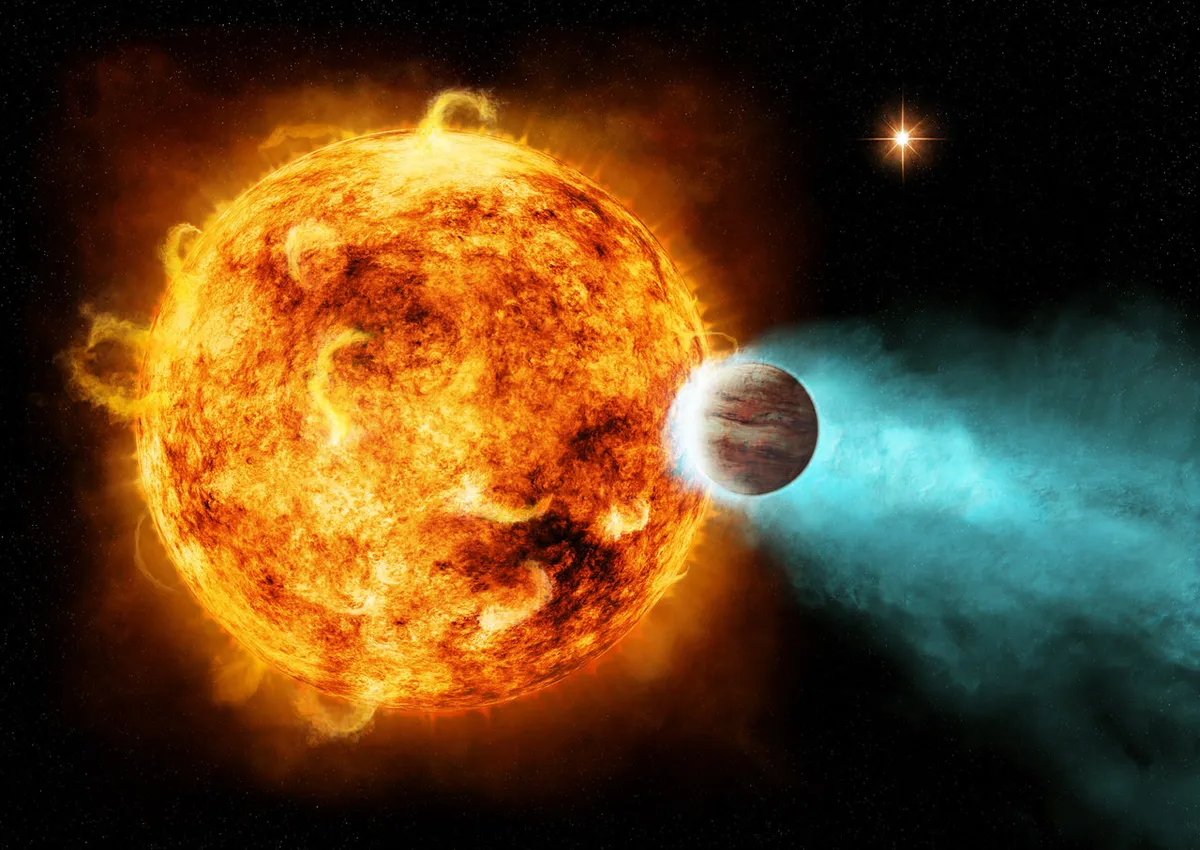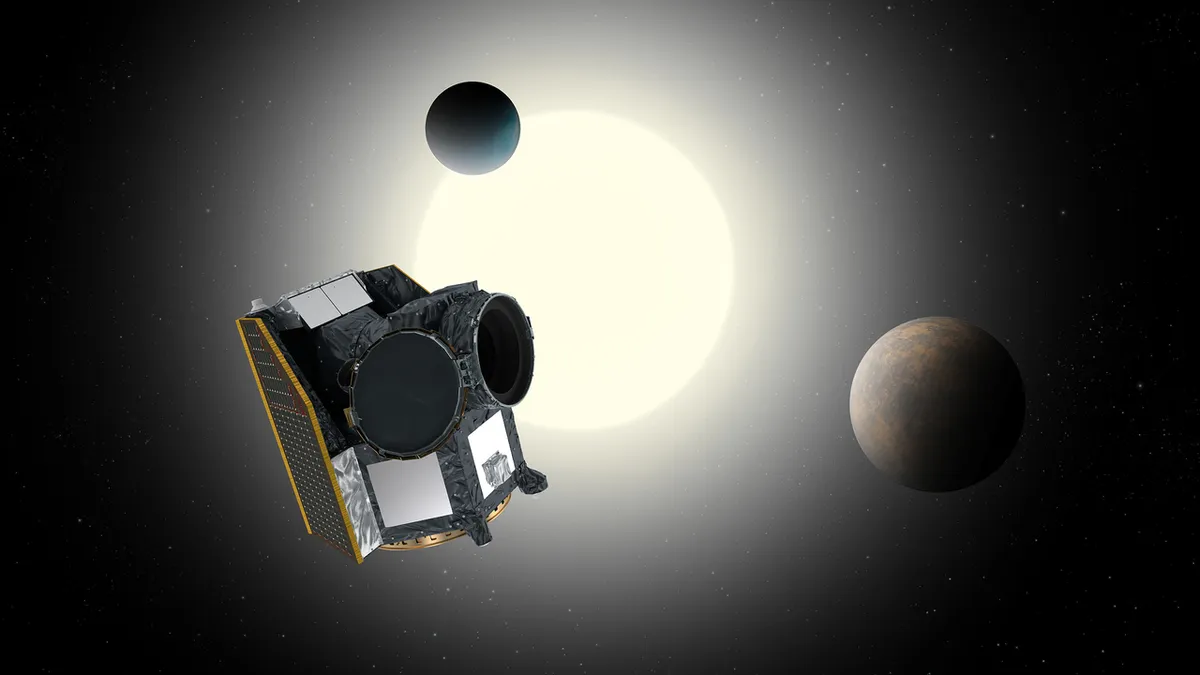NASA's Kepler space telescope was in operation for about nine years, searching for Earth-like, rocky planets beyond our Solar System - exoplanets - that could have the potential to support life.
The Kepler space telescope didn’t discover the first exoplanet, but it was still a transformative scientific mission, says The Sky at Night co-host Chris Lintott.
“We now know, when you look at the night sky, that most of those stars have planets. That’s a discovery that’s due to Kepler,” he says.
“I think that fundamentally changes our view of the Universe, which is an amazing thing for a science mission to have done. It certainly changes the way I look at the night sky.”
NASA decided to retire Kepler in October 2018 when it ran out of fuel.

But unlike many missions, such as the Cassini probe at Saturn or the MESSENGER spacecraft at Mercury, its current ‘safe’ position means that there will be no need for a controlled crash: Kepler will continue to orbit the Sun just behind Earth, falling further behind over time.
Kepler was arguably the baby of William J Borucki of NASA’s Ames Research Center.
- Read our archive interview with Bill Borucki, former project scientist of the Kepler space telescope
As early as 1983 he began researching the potential of photometers – high-precision light detectors – to detect Earth-sized exoplanets from the distinctive dip in starlight they cause while crossing in front of their stars.
In 1992 Borucki and his team submitted their first proposal to NASA’s Discovery Program: a three-year mission using transit photometry to test their hypothesis that most stars have planets orbiting around them.
The proposal was rejected.
What would eventually become the Kepler mission – named after the 17th-century German astronomer Johannes Kepler, who discovered the laws of planetary motion – would be rejected on four separate occasions before it was finally approved in 2001, becoming NASA’s 10th ‘Discovery-class’ mission.
Borucki would remain Kepler’s principal investigator until his retirement in 2015.

A new era of discovery
Launched on 6 March 2009, NASA’s first planet-hunting space observatory was placed into an ‘Earth-trailing’ orbit around the Sun, ready to focus its attention on a small patch of sky in the northern constellations of Cygnus,
Lyra and Draco.
Although covering just 0.25 per cent of the sky, Kepler was nevertheless expected to commence the regular observation of more than 150,000 main sequence stars (in the end, it would observe 530,506), using what was at the time the largest camera system launched into space, with a total resolution of 94.6 megapixels.
During its operational lifetime of more than nine and a half years, Kepler would collect some 678GB of science data.
Kepler’s legacy consists of more than just its 2,662 confirmed exoplanet discoveries.
We can now confidently claim that planets outnumber stars in the Galaxy.
Kepler also showed us that, while we may talk of ‘hot Jupiters’ and other bizarre worlds, anywhere between one fifth and a quarter of stars are statistically likely to be orbited by worlds similar to Kepler-22b, discovered in 2011: that is, between the size of Earth and Neptune, rocky, and orbiting within their stars’ habitable zones.
Above all, Kepler has shown just how varied exoplanets and other planetary systems actually are: potentially ranging from single gas giants orbiting close to their stars (or, in the case of Kepler-16b, whose discovery was announced in September 2011, orbiting around twin stars), to the likes of star Kepler-90, which is now known to have eight worlds all crowded around it closer than Earth is to the Sun.

As a result, Kepler has inevitably transformed our understanding of how our own Solar System formed, forcing us to rethink almost everything we had previously assumed, and raising new questions, such as: why is the most common size of exoplanet found by Kepler – between the size of Earth and Neptune – missing from our own Solar System?
Unlike the Hubble Space Telescope, which NASA astronauts were uniquely able to visit after its launch to make repairs, Kepler’s location meant that when a second of the four reaction wheels used to fine-tune the telescope’s position failed, its original mission was effectively over.
Kepler’s second life However, thanks to some ingenious thinking on the part of NASA scientists and technicians,
Kepler lived on with a second mission, K2, making use of the telescope’s remaining capabilities and taking advantage of the pressure of sunlight to help stabilise the telescope.
This also meant that Kepler was required to switch its field of view every three months or so, bringing many new patches of sky under its gaze.
In October 2015, the K2 mission found evidence of a small, rocky planet being torn apart as it orbited a dense, white dwarf star.
This enabled astronomers to witness the final stages of a planetary system in the strangely-shaped transit data.
In January 2018, an Australian car mechanic sifting through K2’s data discovered a four-planet system with Neptune-size worlds.
“Kepler has demonstrated, almost definitively, how important sharing data openly is in astronomy,” insists Chris Lintott.
“People worldwide have made enormously good use of the Kepler data and, as the mission went on, it became much more open. You could see the effect of that; more people – more junior people – are getting to publish discoveries from the data.
Help discover exoplanets
If you would like to get involved with analysing Kepler data, visit www.nasa.gov/kepler/education/citizen.
“Also, one of the nice side things that came out of Kepler and citizen science was what came to be known as ‘Tabby’s Star’,” he adds.
“This very unusual star was discovered by planet-hunter volunteers who did that very human thing of noticing something odd and setting off on this wonderful, joyful wild goose chase to try to work out what on earth was going on.”
NASA estimates that some 2,946 scientific papers have so far been published using Kepler data.
“We know the spacecraft’s retirement isn’t the end of Kepler’s discoveries,” says Jessie Dotson, Kepler’s project scientist at NASA’s Ames Research Center.
“I’m excited about the diverse discoveries that are yet to come.”

After Kepler, what's next?
“New missions will build on Kepler’s discoveries, including the Transiting Exoplanet Survey Satellite (TESS) and the James Webb Space Telescope,” says Dr Paul Hertz, NASA’s astrophysics division director.
The former is already in position; unlike Kepler, which observed 1/400th of the sky over a period of four years, TESS will study nearly the entire sky, monitoring different sections for 27 days at a time, with smaller fractions of the sky being observed for up to a year.
Expectations are that TESS will catalogue more than 1,500 transiting exoplanet candidates, including rocky worlds in the habitable zones of their host stars.
CHEOPS (CHaracterising ExOPlanet Satellite), a joint project between the European Space Agency and the Swiss Space Office, is expected to launch later this year.
Essentially a follow-up to Kepler, CHEOPS will provide far more accurate measurements of known Earth-to-Neptune-sized exoplanets.
ESA’s PLATO (PLAnetary Transits and Oscillations of stars) will follow in 2026, again with an emphasis on detecting potentially habitable worlds.
Unlike these missions, the long-awaited NASA/ESA James Webb Space Telescope – now set to launch in 2021 – will observe the Universe in the infrared.
The advantage of this is that it will provide clearer spectroscopic information on the make-up of the exoplanets’ atmospheres.
